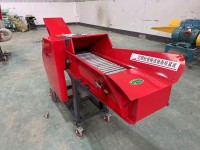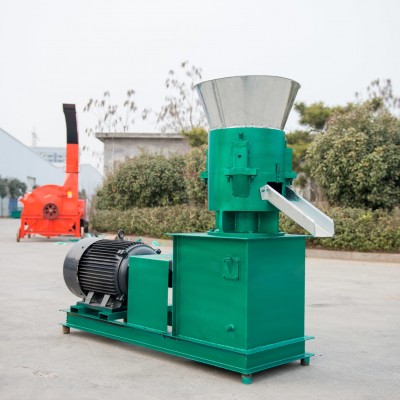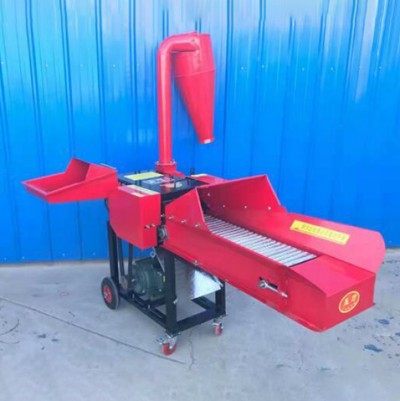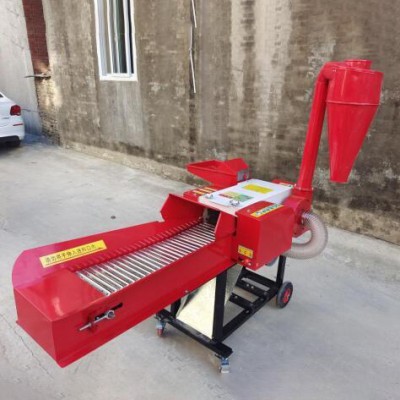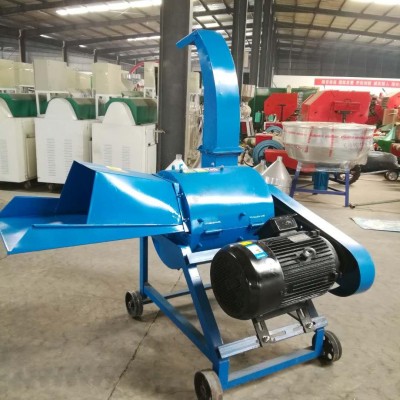
Choosing a good feed crusher, if not used correctly, will not only shorten the service life of the feed crusher, but also affect work efficiency, resulting in twice the result with half the effort.
1. The crusher should be fixed on a cement foundation for long-term operation. If the workplace frequently changes, the crusher and the electric motor should be installed on a machine base made of angle iron. If the crusher is powered by diesel, the power of the two should be matched, that is, the power of the diesel engine should be slightly greater than that of the crusher, and the belt pulley grooves of the two should be consistent, with the outer end face of the belt pulley on the same plane.
2. After the installation of the crusher, it is necessary to check the fastening condition of all fasteners. If there is any looseness, it must be tightened.
3. Check if the belt tension is appropriate and if the motor shaft and crusher shaft are parallel.
4. Before starting the crusher, rotate the rotor by hand to check whether the teeth, hammer blades, and rotor operate flexibly and reliably, whether there is any collision inside the shell, whether the rotation direction of the rotor is consistent with the direction indicated by the arrow on the machine, and whether the motor and pulverizer are well lubricated.
5. Do not replace the belt pulley casually, in order to prevent the crushing chamber from exploding due to excessive speed, or the work efficiency from being affected by too low speed.
6. After starting the crushing table, it should idle for 2-3 minutes without any abnormal phenomena before feeding.
7. Pay attention to the operation of the crusher at all times during work, and ensure even feeding to prevent blockage and blockage of the vehicle. Do not operate at overload for a long time. If any vibration, noise, high temperature of bearings and machine body, or outward spraying is found, the vehicle should be stopped immediately for inspection and troubleshooting before continuing to work.
8. The crushed materials should be carefully inspected to prevent accidents caused by hard objects such as copper, iron, and stones entering the crushing room.
9. Operators should not wear gloves and should stand on the side of the crusher during feeding to prevent rebound debris from injuring the face.
10. When blocked, it is strictly prohibited to forcefully feed or drag out feed with hands or wooden sticks.
View document


 English
English 日本
日本 한국인
한국인 Français
Français Deutsch
Deutsch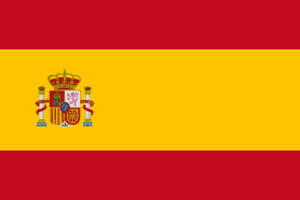 español
español Italiano
Italiano Portugal
Portugal Việt Nam
Việt Nam türkiye
türkiye عرب
عرب Русский
Русский čeština
čeština แบบไทย
แบบไทย Eesti
Eesti Gaeilge
Gaeilge Hmoob
Hmoob íslenskur
íslenskur Cymraeg
Cymraeg български
български اردو
اردو Polski
Polski Hrvatski
Hrvatski українська
українська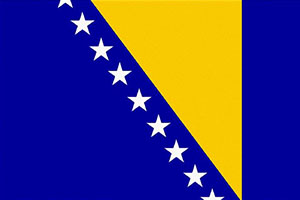 bosanski
bosanski فارسی
فارسی lietuvių
lietuvių latviski
latviski עִברִית
עִברִית Română
Română Ελληνικά
Ελληνικά dansk
dansk Magyar
Magyar norsk
norsk Suomalainen
Suomalainen Nederlands
Nederlands svenska
svenska slovenský
slovenský Slovenščina
Slovenščina हिंदी
हिंदी Indonesia
Indonesia Melayu
Melayu Malti
Malti Kreyòl ayisyen
Kreyòl ayisyen català
català বাংলা
বাংলা Српски
Српски o'zbek
o'zbek


